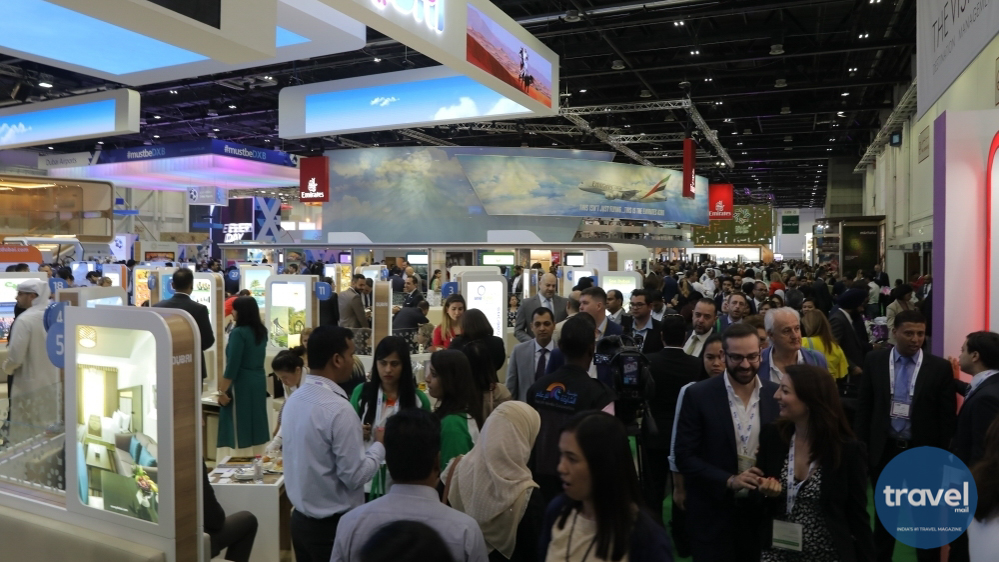TravelMail
[dropcap]N[/dropcap]ew Delhi, by Ajay Gupta: Expo 2020 and its legacy, District 2020, are expected to have a positive long-term influence on the growth of inbound arrivals to the UAE from the country’s top five source markets between 2018 and 2023, according to data published ahead of Arabian Travel Market, which takes place at Dubai World Trade Centre from 28 April – 1 May 2019.
Looking at the country’s top three source markets, the number of Indian visitors traveling to the UAE will increase at a CAGR of 7% to 3.01 million in 2023, while arrivals from Saudi Arabia and the UK will witness an increase of 2% and 1% to 1.76 million and 1.28 million respectively over the same period.
While the UAE’s top source market rankings are expected to remain mostly unchanged post-Expo 2020 – the latest research from Colliers International, in partnership with ATM, reveals the Russian and Chinese source markets will show above average annual growth rates for inbound passenger arrivals.
Danielle Curtis, Exhibition Director ME, Arabian Travel Market, said: “The number of Russian tourists traveling to the UAE will increase at a Compound Annual Growth Rate (CAGR) of 12% to 1.6 million in 2023, while the number of Chinese tourists visiting the UAE will increase at a CAGR of 8% to 1.27 million over the same period, according to the data.” Looking to acquire their share of these high-growth markets at ATM 2019, will be the tourism boards from the UAE’s seven emirates with major exhibits from Dubai, Abu
Dhabi, Ras Al Khaimah, Sharjah, Ajman, and Fujairah as well as over 93 other UAE exhibitors such as Emirates, Emaar Hospitality Group and Dubai Airports Corporation. Curtis said: “Taking a look at the other key drivers, besides Expo 2020, Russian visitors
to the UAE have grown in recent years, due to the introduction of additional and direct
airline routes. Russian visitors also now benefit from relaxed UAE visa regulations and
rising oil prices are helping to strengthen the Russian rouble, making the UAE more
affordable’
“Regarding Chinese visitors, according to some analysts, China’s middle class will swell to 338 million households by 2020, a 13% increase in just five years. Moreover, by 2030 35% of China’s 1.4 billion population will have $10,000 of annual disposable income, up 10% from 2018. Therefore, the growth potential for both markets is significant.”
With 20 million annual visitors expected to visit Dubai by 2020, plus an additional five million between October 2020 and April 2021 – 70% of which will come from outside the UAE – the overall hospitality supply in the emirate is expected to increase by 39% from
59,561 keys in 2017 to 82,994 in 2021 to meet this demand.
Meanwhile in neighboring emirate Abu Dhabi, the number of rooms across three, four
and five-star properties is forecast to grow 13% from 21,782 in 2017 to 24,565 in 2021.
“Just as Dubai and Abu Dhabi have their own unique set of visitor attractions, we are
now seeing the northern emirates carving stronger identities, supported by their
respective tourism authorities. And, while Ras Al Khaimah, Sharjah, and Fujairah are
smaller than Dubai and Abu Dhabi in terms of supply, they are evolving quickly,” Curtis
said.
Ras Al Khaimah is working on an unprecedented pipeline, which will more than double
the number of hotel rooms, from 4,019 in 2017 to 9,078 in 2021, the largest
proportionate pipeline in the GCC.
—————————————————————————————
Follow us for quick updates:
Facebook
Instagram
—————————————————————————————


